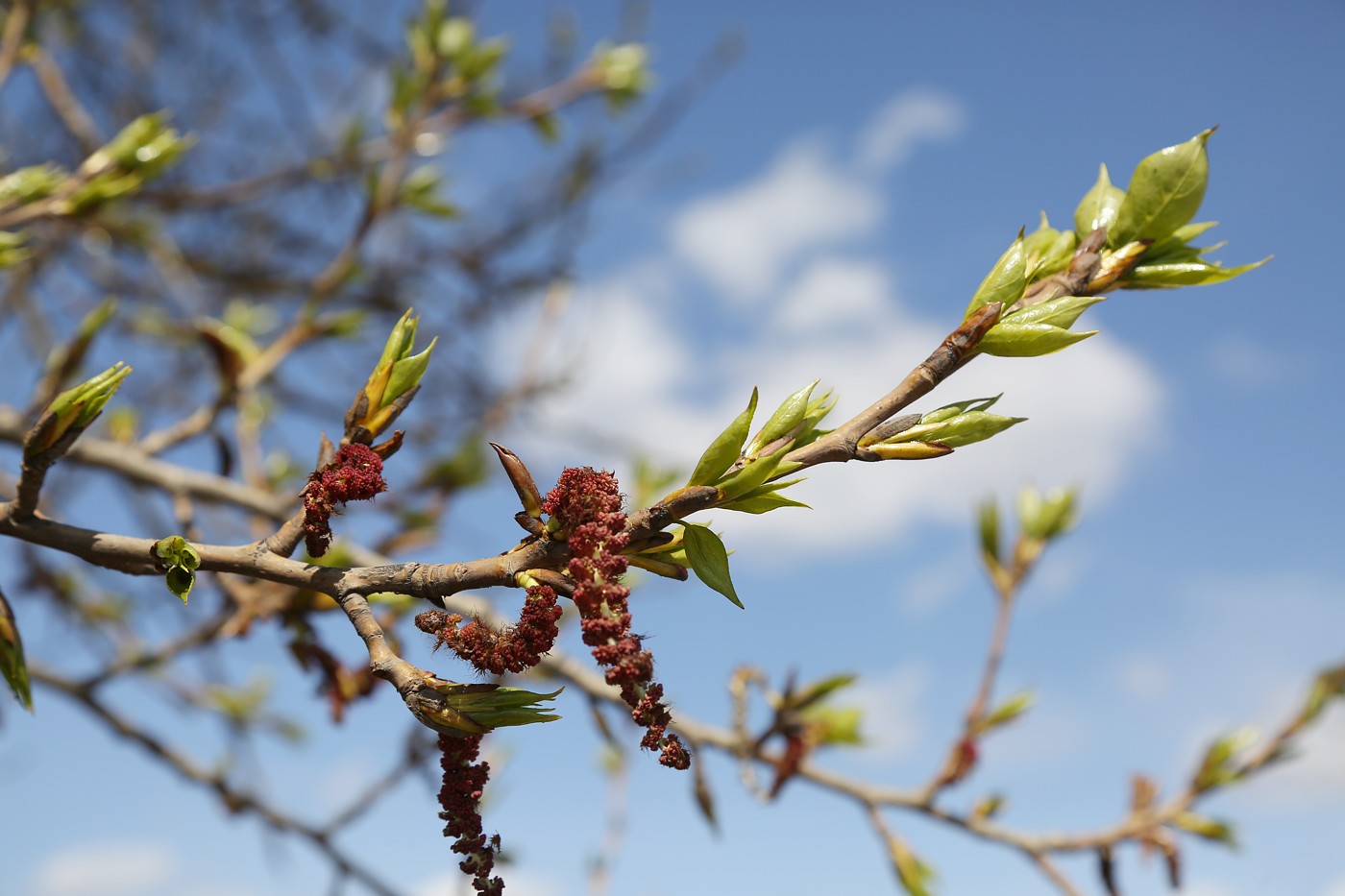INFLUENCE OF POPULUS BALZAMIFERA BUDNEY EXTRACT ON THE GROWTH AND DEVELOPMENT OF CABBAGE
UDK 54.056
Abstract
In recent years, there has been a persistent search for new methods and technologies for cultivating individual crops in order to increase their productivity and improve product quality. New methods of pre-sowing seed treatment with biological stimulants are increasingly being introduced, increasing not only crop yields, but also changing (increasingly) the content of important nutrients (proteins, fats, carbohydrates, oils, and others). Despite the rapid development of chemistry and the growth in the number of new highly effective drugs of biotechnological and synthetic origin, plants continue to occupy a significant place as a growth stimulator of agricultural crops.
The aim of the work is to evaluate the effect of poplar extract on the growth and development of white cabbage.
Tasks: to investigate the qualitative composition of the aqueous extract of poplar buds; to establish the growth-stimulating activity of the extract of balsamic poplar buds in relation to the seeds of white cabbage.
Methodology and scientific approaches: in the course of the work, experimental studies were carried out on the extraction of natural compounds of balsam poplar buds, evaluating the effectiveness of the balsam poplar bud extract on the growth and development of white cabbage.
Results and conclusions: in the composition of the aqueous extract of poplar buds, such classes of compounds as flavonoids, tannins, coumarins, saponins, amino acids, phenolic acids, polysaccharides were identified; the use of poplar bud extract had a significant impact on morphogenesis, physiological and biochemical parameters, and the productivity of white cabbage of the "Gift" variety.
Downloads
Metrics
References
Polyakov V.V., Vilkov K.V. Efirnyye masla rasteniy i ikh biologicheskaya aktivnost'. [Essential oils of plants and their biological activity]. Almaty, 2005. 196 p. (in Russ.).
Polyakov V.V., Tangulova B.M., Akhmetova p.B., Sadyrbekov D.T. Farmatsiya Kazakhstana, 2005, no. 2, pp. 12–13. (in Russ.).
Lobanova A.A., Budayeva V.V., Sakovich G.V. Khimiya Rastitel'nogo Syr'ya, 2004, no. 1, pp. 47–52. (in Russ.).
Sorokina I.V. et al. Ekologiya. Seriya analiticheskikh obzorov mirovoy literatury. 1997, no. 46, pp. 3–58. (in Russ.).
Meshchanova A.G. et al. Khimiya Rastitel'nogo Syr'ya, 2022, no. 4, pp. 269–276. DOI: 10.14258/jcprm.20220411385. (in Russ.).
Duktov A.P., Vorontsov G.V. Mikrobiologiya. Kurs lektsiy: ucheb.-metod. posobiye. [Microbiology. Course of lec-tures: educational and methodological manual]. Gorki, 2017, 136 p. (in Russ.).
Lupova Ye.I., Vinogradov D.V., Masterov A.S. Sovershenstvovaniye tekhnologii vozdelyvaniya surepitsy. [Improving the technology of cultivating rapeseed]. Ryazan, 2020, 176 p. (in Russ.).
Nikonovich T.V., Ivanistov A.N., Frantsuzenok V.V. Biotekhnologiya v rasteniyevodstve: kurs lektsiy. [Biotechnology in crop production: a course of lectures]. Gorki, 2017, 84 p. (in Russ.).
Lushnikova T.A. Praktikum po fiziologii rasteniy. [Workshop on plant physiology]. Kurgan, 2018, 94 p. (in Russ.).
Tret'yakov N.N. et al. Praktikum po fiziologii rasteniy. [Workshop on plant physiology]. Moscow, 2003, 288 p. (in Russ.).
Zimina Ye.V., Kukushkin I.A., Petrova O.A. Dostizheniya vuzovskoy nauki, 2014, no. 8, pp. 20–26. (in Russ.).
Alpeyeva M.I. et al. Pishchevyye innovatsii i biotekhnologii, 2017, pp. 11–12. (in Russ.).
Ivanov L.A., Silina A.A., Tsel'niker Yu.L. Botanicheskiy zhurnal, 1950, vol. 35, no. 2, pp. 171–185. (in Russ.).
Filiptsova G.G., Smolich I.I. Biokhimiya rasteniy: metod. rekomendatsii k laboratornym zanyatiyam, zadaniya dlya samostoyatel'noy raboty studentov. [Biochemistry of plants: method. recommendations for laboratory classes, assign-ments for students’ independent work]. Minsk, 2004, 60 p. (in Russ.).
Korul'kin D.Yu. et al. Fenol'nyye soyedineniya: funktsional'naya rol' v rasteniyakh, 2018, pp. 214–216. (in Russ.).
Shevchenko A.S., Muzychkina R.A., Korul'kin D.Yu. Vestnik natsional'noy inzhenernoy akademii RK, 2017, no. 3, pp. 60–65. (in Russ.).
Routray W., Orsat V. Food and Bioprocess Technology, 2012, vol. 5, no. 2, pp. 409–424. DOI: 10.1007/s11947-011-0573-z.
Maksimov I.V., Abizgil'dina R.R., Pusenkova L.I. Prikladnaya biokhimiya i mikrobiologiya, 2011, vol. 47, no. 4, pp. 373–385. (in Russ.).
Mukusheva G.K. et al. Chemistry of Natural Compounds, 2015, vol. 51, no. 3, pp. 464–471.
Pignatelli P. et al. The American journal of clinical nutrition, 2000, vol. 72, no. 5, pp. 1150–1155. DOI: 10.1093/ajcn/72.5.1150.
Kohler N., Lipton A. Experimental cell research, 1974, vol. 87, no. 2, pp. 297–301. DOI: 10.1016/0014-4827(74)90484-4.
Ahmad F., Ahmad I., Khan M.S. Microbiological research, 2008, vol. 163, no. 2, pp. 173–181. DOI: 10.1016/j.micres.2006.04.001.
Reddy A.V.B. et al. Studies in natural products chemistry, 2020, vol. 66, pp. 197–223.

Copyright (c) 2024 chemistry of plant raw material

This work is licensed under a Creative Commons Attribution 4.0 International License.

This work is licensed under a Creative Commons Attribution 4.0 International License.
The authors, which are published in this journal, agree to the following conditions:
1. Authors retain the copyright to the work and transfer to the journal the right of the first publication along with the work, at the same time licensing it under the terms of the Creative Commons Attribution License, which allows others to distribute this work with the obligatory indication of the authorship of this work and a link to the original publication in this journal .
2. The authors retain the right to enter into separate, additional contractual agreements for the non-exclusive distribution of the version of the work published by this journal (for example, to place it in the university depository or to publish it in a book), with reference to the original publication in this journal.
3. Authors are allowed to post their work on the Internet (for example, in a university repository or on their personal website) before and during the review process of this journal, as this may lead to a productive discussion, as well as more links to this published work.











